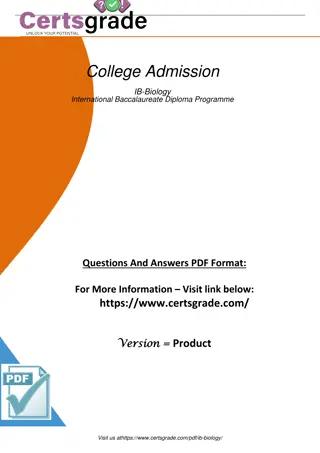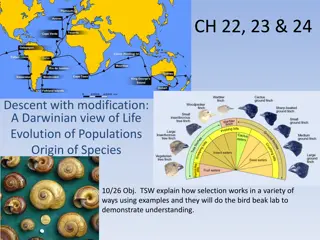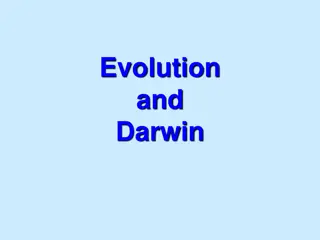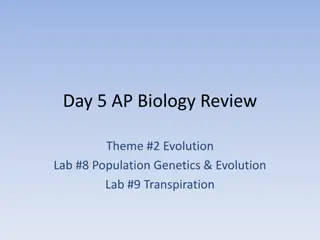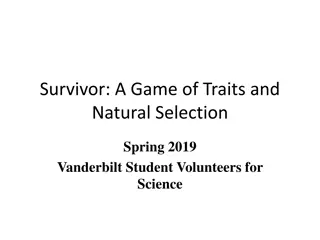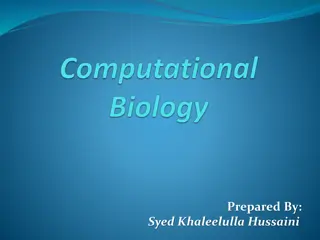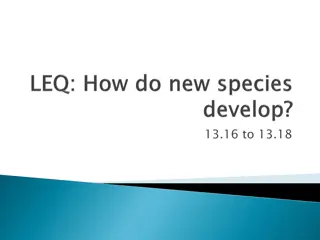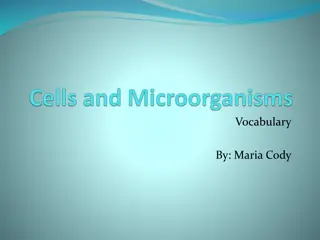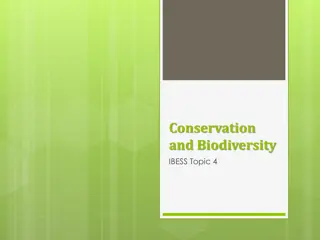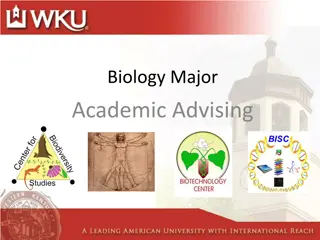Understanding Natural Selection in Higher Biology
Natural selection in action is demonstrated through mutations that impact an organism's adaptation to changing environments. Sickle cell anemia, a genetically transmitted blood disorder, exemplifies the consequences of specific mutations. The condition manifests in various symptoms, affecting individuals differently based on their genetic makeup. Incomplete dominance and the prevalence of sickle cell trait in African populations highlight the complex interplay between genetics, environment, and disease resistance. Ultimately, natural selection favors those with advantageous traits, shaping population genetics over time.
Download Presentation

Please find below an Image/Link to download the presentation.
The content on the website is provided AS IS for your information and personal use only. It may not be sold, licensed, or shared on other websites without obtaining consent from the author. Download presentation by click this link. If you encounter any issues during the download, it is possible that the publisher has removed the file from their server.
E N D
Presentation Transcript
Natural Selection in Action Higher Biology
Natural Selection in Action Most mutations produce inferior versions of original gene Some mutations allow adaption to a changing environment Mutant allele gives mutant form of organism a selective advantage Change in environment -abiotic factor (e.g. pollution) -biotic factor (e.g. disease)
Sickle cell anaemia Genetically transmitted disease of the blood Caused by presence of abnormal haemoglobin S Abnormality occurs as result of mutation
Haemoglobin S H allele for normal haemoglobin S allele for haemoglobin S People homozygous for mutant allele (SS) -sickle-shaped red blood cells -inefficient at carrying oxygen -cells clump together interfering with circulation
Symptoms of Sickle Cell Anaemia Fatigue Breathlessness rapid heart rate delayed growth and puberty susceptibility to infections ulcers on the lower legs (in adolescents and adults) jaundice attacks of abdominal pain weakness joint pain fever Vomiting bloody (hematuria) urination excessive thirst excessive penis pain Priapism chest pain decreased fertility
Incomplete dominance Allele H incompletely dominant to allele S Heterozygotes HS Allele S partially expressed Sickle Cell Trait -a third of the haemoglobin is S
Sickle Cell Anemia in Africa Allele S rare in populations as semi- lethal Some parts of Africa up to 40% of population is HS People with Sickle Cell Trait resistant to malaria
Distribution of malaria Distribution of sickle cell trait
Sickle Cell Trait and Malaria In malarial regions -natural selection favours people with genotype HS People that are HH will die during serious outbreaks of the disease Hs loses selective advantage in non- malarial sites
Industrial Melanism in Peppered Moth Two forms of Biston betularia (peppered moth) (melanic)
Biston betularia Differ by only one allele of the gene forming dark pigment (melanin) Both forms fly by night Both forms rest on trees during the day
Prior to Industrial revolution Pre 1800s Light form common throughout Britain Dark arose by mutation -very rare
Light peppered moths In non-polluted areas -tree trunks covered with pale coloured lichens Moth well camouflaged against pale background Dark form easily seen and eaten by predators
Survey in the 1950s Pale form most abundant in non- industrial areas Dark forms most abundant in areas suffering from heavy air-pollution
Reason for change? In polluted areas -toxic gases kill lichen -soot particles darken tree trunks Dark coloured well hidden and favoured by natural selection Light coloured moth easily seen
Frequencies of two forms of peppered moths in the 1950s
This powerpoint was kindly donated to www.worldofteaching.com http://www.worldofteaching.com is home to over a thousand powerpoints submitted by teachers. This is a completely free site and requires no registration. Please visit and I hope it will help in your teaching.



